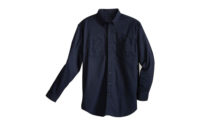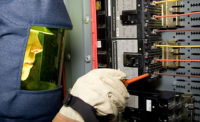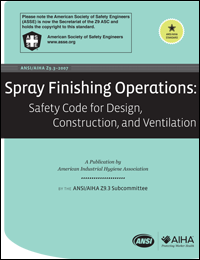This information comes from an OSHA Letter of Interpretation dated July 13, 2015:
Question:Under 29 CFR 1910.269, can an employer use Table 410-1 of the 2012 National Electrical Safety Code (NESC) to select protective clothing and equipment? 1
Response:Paragraph (1)(8)(ii) of 29 CFR 1910.269 provides that "[f]or each employee exposed to hazards from electric arcs, the employer . . . make a reasonable estimate of the incident heat energy to which the employee would be exposed." The employer must use that estimate for purposes of complying with requirements for protective clothing and other protective equipment (see 29 CFR 1910.269(1)(8)(v)).
Note 1 to 29 CFR 1910.269(1)(8)(ii) provides that an employer can use any method of calculating incident heat energy that reasonably predicts the incident energy to which employees would be exposed. And Appendix E to 29 CFR 1910.269 provides guidance on estimating available heat energy. In developing the guidance in Appendix E, OSHA emphasized calculation methods that are supported by testing data. While Appendix E does not specifically address Table 410-1 in the 2012 NESC, OSHA has reviewed that table and its lengthy set of explanatory notes to determine if the arc-rating values it provides for various types of equipment provide reasonable estimates of incident energy as required by 29 CFR 1910.269(1)(8)(ii).
Table 410-1 of the 2012 NESC provides values for "the effective arc rating of clothing or a clothing system to be worn by employees working on or near energized lines, parts, or equipment." (See Rule 410.A.3.a.) The Agency has determined that many of the values listed in Table 410-1 are acceptable for compliance with 29 CFR 1910.269(1)(8)(ii) because the notes to the table make clear that those values are based either on testing data or on calculations performed using methods described in IEEE Std 1584-2002 (IEEE Guide for Performing Arc Flash Hazard Calculations).
However, the 2012 NESC does not contain enough information for OSHA to evaluate the reasonableness of the values in Table 410-1 to which notes 7 and 8 to that table apply. The text of notes 7 and 8 suggest that the values to which those notes apply are not based on testing data or generally recognized calculation methods.
Therefore, at this time OSHA can state only that it will accept the use of Table 410-1 in the 2012 NESC with respect to the values in that table to which notes 7 and 8 do not apply. When the employer's estimates follow this guidance, OSHA will accept arc-rated protection based on those estimates under 29 CFR 1910.269(1)(8)(v).
Thomas Galassi, Director
Directorate of Enforcement Programs
1 Although you inquired only about OSHA's general industry standard for electric power generation, transmission, and distribution (29 CFR 1910.269), the guidance provided in this letter also applies to the construction requirements at 29 CFR 1926.960(g)(2) and (5).



